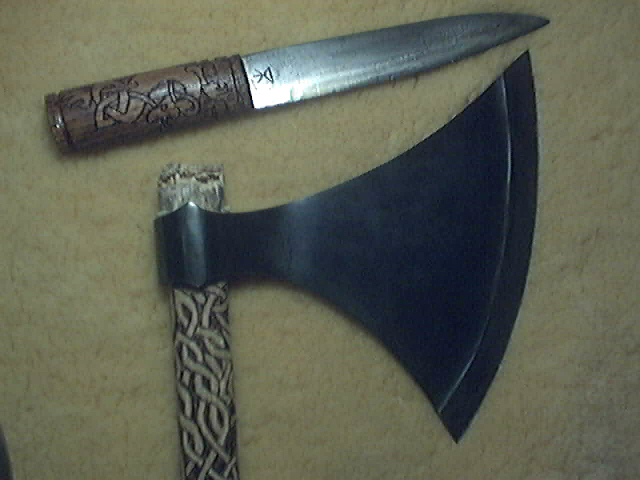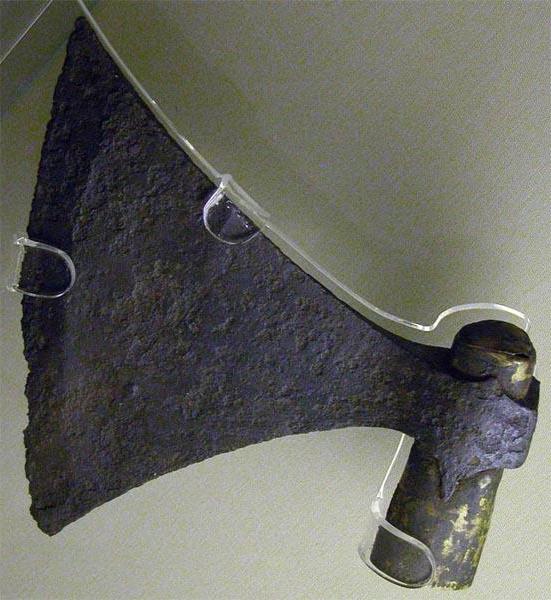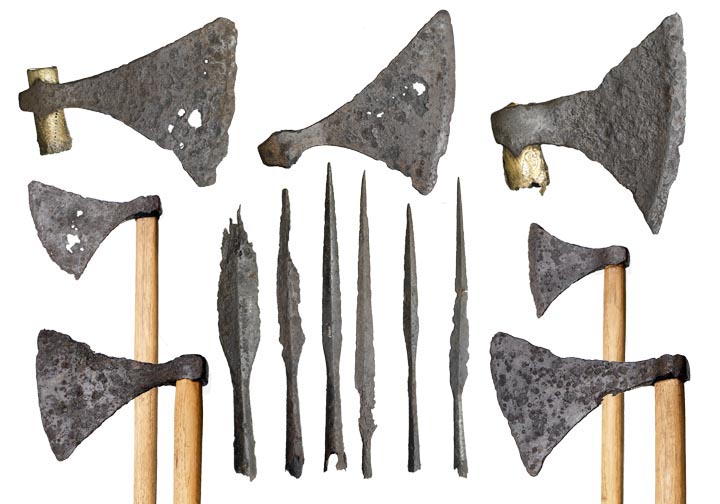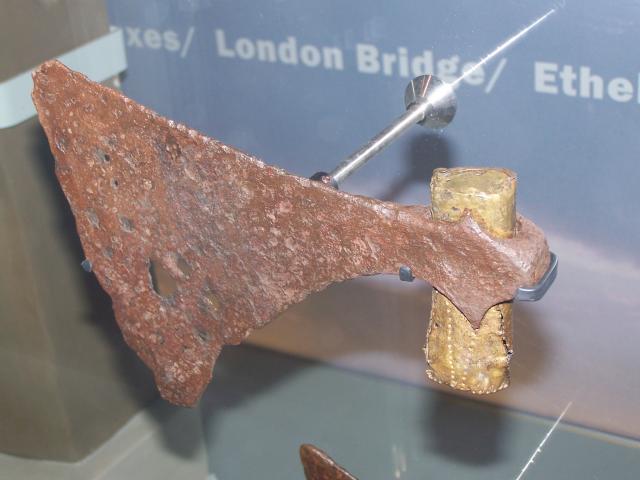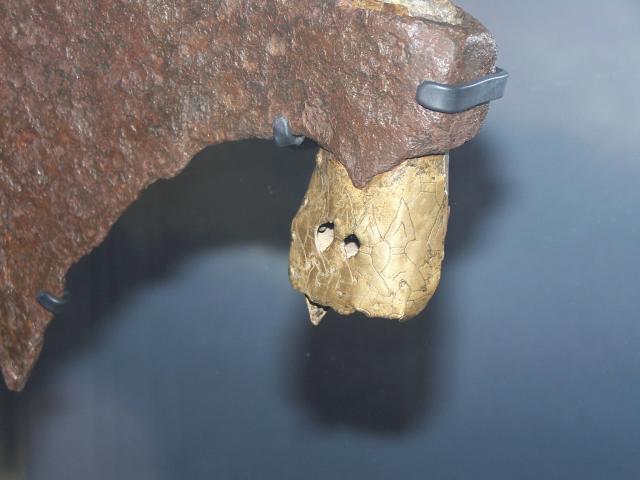I'll be adding a brass sheathing like the one on the original, but to both ends of the haft. If time and money allow I'm going to have an associate of mine, Travis Conn, make the caps and perhaps do some repousse decoration as well.
Anyhow I think the brass caps and the black axe head would look sharp with a blackened haft, but I'm not sure how to go about it. If It's not just right I'll probably skip it. The haft will be made from oak.
I was thinking of an soot / linseed oil mix worked into the wood, which I think would blacken the wood, but it might just make it look like crap. Or I could char the surface with a heat gun, but that might come out very blotchy and uneven. Alternately, I could just leave the darned haft alone. Any thoughts?
